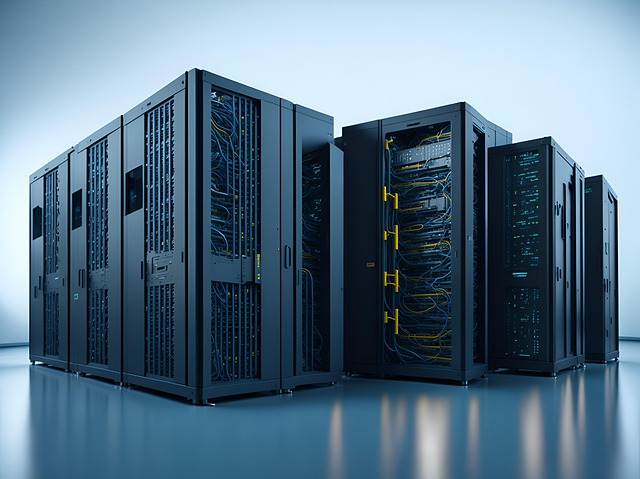Data Center Sustainability – Powering Smart Cities Responsibly. Standing on the roof of our newest data center last month, I watched technicians installing the final panels of our 2MW solar array. Below me, thousands of servers were already humming, processing traffic data that would optimize signal timing across the city. The irony wasn’t lost on me: these servers were helping reduce vehicle emissions citywide, but without our renewable energy investment, they’d be contributing to the very problem they were trying to solve.
This is the paradox at the heart of smart city infrastructure. The technology that makes our cities more efficient often has its own massive environmental footprint unless we design it not to.
The Hidden Energy Giants
When I give tours of our facilities to city officials, they’re often shocked by two numbers:
A typical 10MW data center consumes as much electricity as 8,000 households
The ICT sector already accounts for more carbon emissions than the entire airline industry
What’s more concerning is the growth trajectory. Smart city initiatives are generating data at unprecedented rates:
A single autonomous vehicle generates up to 4TB of data per day
Smart utility grids collect billions of data points hourly
Municipal IoT networks can include tens of thousands of sensors
All this data needs processing, and traditional data centers are ill-equipped to handle this sustainably. Their Power Usage Effectiveness (PUE) ratios comparing total energy consumption to computing energy often exceed 2.0, meaning half the power never reaches computing equipment.
Technical Approaches to Sustainable Data Infrastructure
Through my work implementing sustainable data centers across three major metropolitan areas, I’ve found several technical strategies that deliver measurable improvements:
- Dynamic Power Management
Modern facilities use AI-driven power orchestration that can:
Shift workloads based on renewable availability (following the sun)
Implement precise server sleep states during low-demand periods
Leverage predictive analytics to optimize cooling exactly when needed
In our latest deployment, this approach reduced baseline power consumption by 31% compared to static management.
- Thermal Architecture Revolution
The traditional raised-floor, forced-air cooling paradigm is fundamentally inefficient. New approaches include:
Direct liquid cooling (DLC) that brings dielectric fluid directly to processors
Rear-door heat exchangers with higher temperature differentials
Two-phase immersion cooling that uses fluid phase change for heat absorption
These techniques can achieve partial PUE values as low as 1.03 for cooling systems.
- Circular Hardware Economy
E-waste remains one of the least addressed aspects of data center sustainability. Technical solutions include:
Disaggregated server architecture allowing component-level upgrades
Hardware certification programs ensuring 95%+ recyclability
Extended lifecycle planning with 7+ year server roadmaps instead of 3-year refreshes
One client reduced their hardware disposal by 64% through these approaches without sacrificing computational performance.
The Urban Integration Opportunity
What excites me most is the potential for data centers to become contributors to urban sustainability rather than detractors. Consider these integration possibilities:
Waste Heat Recapture The heat generated by servers isn’t waste—it’s a resource. In Stockholm, data center waste heat is integrated into the district heating system, warming thousands of apartments. The technical implementation requires:
Heat exchangers with 85%+ efficiency
Low-temperature heating networks (45-55°C)
Demand-response systems that balance computing and heating needs
Microgrids and Energy Storage Data centers can serve as anchors for community microgrids:
Battery systems that provide grid services while ensuring uptime
Load-shifting capabilities that help balance renewable intermittency
Emergency power provision during outages
Water Conservation Through Technology In water-stressed regions, data centers can pioneer conservation technologies:
Air-to-water generation systems for cooling makeup water
Closed-loop cooling with advanced filtration and treatment
Rainwater harvesting with predictive weather integration
The Path Forward
The technical challenges of sustainable data centers are substantial but solvable. What’s often missing is the will to implement solutions that may have higher upfront costs but lower total cost of ownership.
Smart cities need data infrastructure that aligns with their broader sustainability goals. This requires:
Procurement policies that factor carbon impact alongside performance metrics
Building codes that mandate heat recovery and water efficiency
Power purchase agreements that drive renewable energy development
Conclusion
Every byte of data processed in our smart cities carries an environmental cost. As architects of digital infrastructure, we have a responsibility to minimize that cost through innovative design, efficient operations, and circular resource models.
The most advanced smart cities recognize that true intelligence isn’t just about collecting and processing more data it’s about doing so with minimal environmental impact. As we build the digital foundation for tomorrow’s urban environments, sustainability can’t be an afterthought. It must be built into the very fiber of our data infrastructure.

